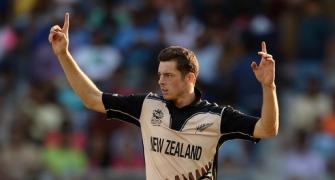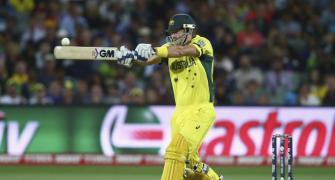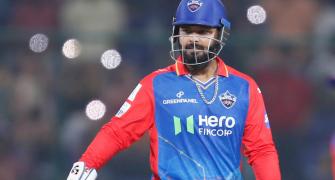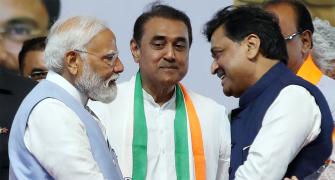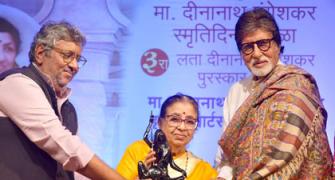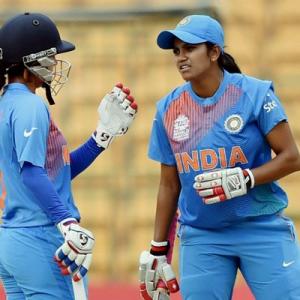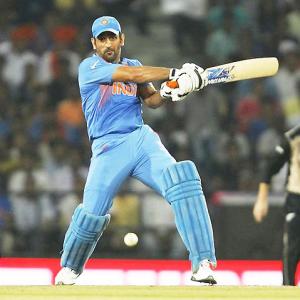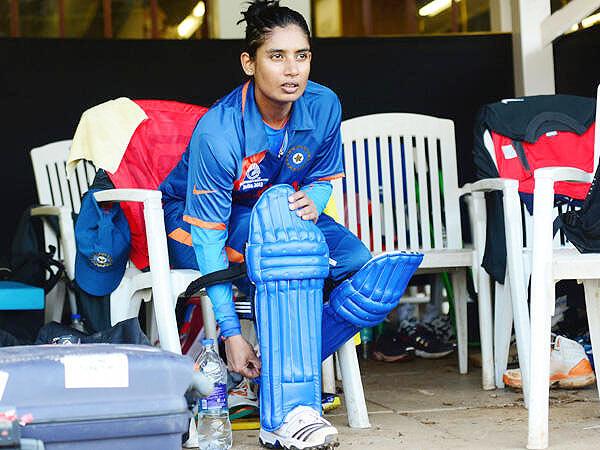
On a day (Tuesday) when India’s much-followed men’s team succumbed to a humiliating defeat to New Zealand, the women’s team won their opening encounter of 2016 ICC World T20 by a comprehensive 76-run margin against Bangladesh.
In a chat with BCCI.TV ahead of India’s World Twenty20 campaign, the captain of the women’s team and star batsman Mithali Raj spoke about the team’s journey and analysed her team’s strengths for the tournament.
The determination to win this world cup is so evident in the team. How long has the team been preparing for this tournament mentally and physically?
It all started from the Australia series. After the last World Twenty20 that happened in Bangladesh two years back, the team underwent a lot of changes.
Now this team has been together for a year and a half. During that tour of Australia everything started coming together for us. Players like Veda Krishnamurthy, Harmanpreet (Kaur), Smriti Mandhana, and Anuja Patil came on their own. We tried different combinations and we wanted to see which players can adapt to different conditions.
We started doing these things in the home series against Sri Lanka and the 10-day preparatory camp before this tournament. We had a good window in which we could propel the girls to give their best and understand the plans.
For so many girls in this team, this is the phase where their careers are shaping up. What are the challenges and excitement of leading such a young team in a big tournament like this?
It is exciting. With the young players who are starting out in their international careers, it is easier to mould them. With the experienced players there could be a clash of thoughts and it can get a little awkward or difficult.
When you have youngsters who believe in their captain and the roles assigned to them and who understand it is for the benefit of the team, my job becomes easier.
Many of these girls idolise you. Now that they play with you, they look up to you for inspiration. Is that an added role for you besides your batting and captaincy?
I have never tried to get into that role. I have always believed that if you perform to the best of your ability, it will motivate young players. How you carry yourself on and off the field is what youngsters look at in their favourite players.
As with me being the captain, I don’t try to show that I am the dominant force in the team. I try to be one among them. That is how you develop a rapport and be approachable as the captain.
Since leading India in the 2005 World Cup as a rookie captain, I have grown in that role. I have learnt from my mistakes and transformed a lot.
With this bunch of girls I have made an effort to interact more, crack jokes with them and make them feel at ease because no matter how much you are admired as a player, if you are not approachable, things can get very difficult.
Is that something you have come to realise leading a young team like this?
That is right. Earlier I led a team where most players were my age and as experienced as me. I didn’t have to tell them what they were expected to do. We were all at the same level of maturity. With this team I sometimes have to get out of my comfort zone to see if they are feeling down, and pep them up.
I have been around for a long time and they would have heard my name since their junior days. They might see me as this big player and so would be hesitant to approach me. Hence, I have to take the first step and make them feel comfortable.
Earlier on tours, batting and reading was all I did. But now I make that extra effort off the field as well to hang out with them, go for dinners and try to know them more closely as people. That makes my job easier on the field as I have a better idea as to what makes each one of them tick.
Jhulan Goswami is another senior player in the ranks. Talk about the relationship between the two of you and how you lead the team together.
Jhulan and I go back to our Under-19 days. I have seen her grow from a rookie fast bowler to being someone who every young girl in India who plays cricket wants to bowl like. She has one of the best work ethics – you can see the intensity she puts in during the training sessions.
Like every fast bowler, Jhulan has had her fair share of injuries and the way she has fought back each time and regained that consistency is very commendable. It is something every young cricketer should learn from her.
To have her by my side is valuable. As the captain I have a lot going on in the field. She takes up the responsibility of keeping the spirits up and encouraging the girls. She makes my job easier by being the bowling captain.

The top-order looks steady now. Does it ease some of your burden?
Yes, after a long time I can say that I have the luxury to play freely in the T20 format. I have started to open the batting in the T20s because now I know that we have batters who can step up and see the team through.
Earlier the bulk of the batting responsibility was on my shoulders, so I could not bat freely even if I wanted to. It makes me very happy because this is the format where you should be able to go out there and express yourself without too much load on your shoulders.
A lot of credit for that goes to Smriti Mandhana, who is in incredible form. She hits the ball hard and looks fearless. A handy asset to have in this format?
Again, after a long time we have a batter who looks so confident and compact. She is in the form of her life and now she must see to it that she makes the most of it.
Once you hit form like that, no matter how young you are, the team will start depending on you and expect you to take more responsibility. That responsibility should not deter her from playing her natural game. What makes her special is that she is very strong off the backfoot.
We don’t usually get to see that in women’s cricket where we are predominantly front foot players because we don’t get to face that kind of bounce often to play on the backfoot.
There is an air of assured self believe about this team. Was there a conscious effort to work on that aspect?
Once you hit that note where you feel confident, you cannot go back. This team has found that, especially in the T20 format, which we were not very good at. Now suddenly we look so strong.
Everybody is so keen on doing well in the World Cup. This is a very fortunate bunch of girls; they get to play the World Twenty20 at home and the matches are televised.
Spin is expected to play a big part since the tournament is played in India. You have some variety there with off-spinners, left-arm spinners and a leg-spinner in Poonam Yadav.
We do. Poonam did very well in Bangladesh on very similar wickets. She is slower through the air and off the wicket as well, so it gets difficult to hit her, which makes her very useful in this format.
She can purchase wickets for us. We have very good left-arm spinners in Rajeshwari (Gayakwad) and Ekta Bisht, who is very experienced. Deepti Sharma is a young off-spinner who has done exceptionally well of late. We have Anuja Patil who has been a fresh breath of air for the Indian team in that she can contribute equally with the ball and bat. So, yes, we have good variety in that department and depending on the opposition and conditions, I have many options to choose from.
What are some of the main changes you have observed in the way women’s cricket is run in India since it came under the BCCI patronage?
According to me the top most advantage is that now we have a chance to interact more with the men cricketers and male coaches. No matter what you say, cricket is still dominated by men, and it is they who set the standard.
They have a lot of knowledge to give us that would help us immensely and give the girls confidence. The central contracts have come as a huge boost for women’s cricket in India as it gives the girls the opportunity to play cricket as a profession and earn a living through it. Since we got under the BCCI head, even the state associations have started to promote women’s cricket and give them the same facilities that the boys get.
We have good pre-tournament camps now, access to the NCA facilities, good trainers and physios. As a result the girls have become more aware of how to take care of their bodies, what routine to follow during the season and in the off season.
They are more aware of how to manage injuries, and when injuries do happen, the BCCI takes care of us by putting us up in rehabs. These are good times for women’s cricket in India.
Courtesy: BCCI


